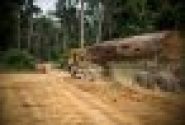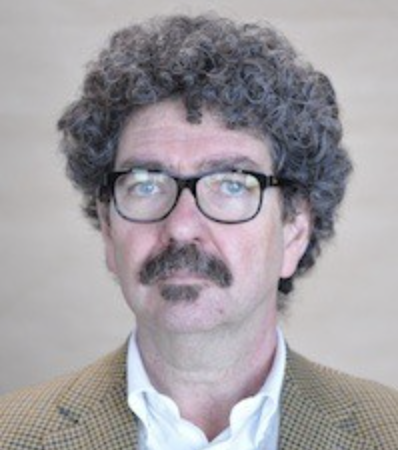BOGOR, Indonesia (16 February, 2012)_Slash and burn agriculture practiced by smallholder farmers results in the best regeneration of valuable tropical timber trees, according to new research by Bioversity International.
“Banning the use of fire, which many governments are doing in the name of protecting the environment, can reduce the options if you want to maintain a diverse, valuable, and above all sustainable, resource for people to use,” said Dr Laura Snook, Bioversity’s programme leader for forests.
This conclusion is based on years of work in Quintana Roo state in Mexico, where local communities manage the largest remnant of tropical forest in Mesoamerica for timber harvesting.
“This adds yet another fascinating piece to a body of evidence that much slash-and-burn agriculture — like many other locally developed systems of resource use — has been misunderstood and unjustly condemned,” said Christine Padoch, Director of the Livelihoods Program at CIFOR.
The tight integration of agriculture and forest management in Quintana Roo is a common feature of smallholder production systems in the humid tropics, said Padoch “yet it remains misunderstood by and “invisible’ to most foresters and agricultural scientists alike”.
“Such misunderstandings often result in inappropriate conservation and forestry policy measures, and the small foresters and farmers that such policies should benefit, often lose out.”
In 1996, Snook and her colleagues created 24 half-hectare clearings in the forest, using three different methods. Eight were clear-felled; all the trees cut down and left on site, their stumps remaining in the ground. Eight were cleared by machine; bulldozers pushed over the trees, including most roots, and moved them to the sides of the plot. And eight were cleared by slash and burn; the trees were felled, allowed to dry and then burned — the traditional method of preparing land for agriculture.
In the plots the researchers planted seeds and seedlings of mahogany, the most valuable timber species by far, to see how they would fare.
“Slash and burn was best for mahogany,” said Snook, “But what was really interesting about the plots, when we went back more than a decade later, was how many other valuable species there were.”
In clear-felled plots, more than half the area was occupied by species of no commercial timber value, and a further fifth by cheap soft-wooded species. Less than 30% was valuable species.
On plots that had been cleared by machine or slash and burn, by contrast, 60% were commercially valuable. While there were no overall differences in the composition of trees on the machined and burned plots, the largest 10% of trees were significantly bigger on the slash and burn plots.
The differences are not hard to explain. Trees on clear-felled plots sprout from the trunks and roots left in the ground, which quickly results in a forest canopy that favours species that can tolerate shade. These shade-tolerant species typically dominate old-growth forest. The trees that result from such sprouts are often multi-stemmed and not a good shape for timber, so even if they’re timber species, they may not be commercially valuable.
“Many valuable timber trees require sunlight to regenerate – they don’t survive in the small gaps produced by timber harvesting or in the clear-felled plots because they are quickly overshadowed,” said Snook. “What we’re doing is mimicking the effects of hurricanes and lightning strikes, which were burning large clearings long before humans came along and did the same. One of the reasons these forests in Quintana Roo are rich in mahogany is because they are former fields of the Maya, abandoned a thousand years ago.”
The basic ecology of trees and forests means that the results from Quintana Roo are probably widely applicable. In every kind of forest, there are long-lived species that can’t grow under shade and that need open clearings to regenerate. In many cases, those are commercially valuable. Red oak in the United States and African mahoganies are other examples.
Slash and burn is better than machine clearing for two main reasons. First, the burning releases nutrients that are available to the growing seedlings and contribute to faster growth. Secondly, and perhaps more importantly, burning is a technology that the local people are intimately familiar with and use easily. It doesn’t require the capital investment or fuel of machinery. And the diversity of naturally-regenerated forest offers people the resilience of different markets for different types of timber.
Snook does sound a note of caution. “These results come from a single snapshot after only 11 years. We don’t know whether the differences will persist, increase or decrease. Nevertheless, it is clear that slash and burn is important to ensure that valuable hardwoods can be harvested into the future. I hope governments will consider that as they develop their policies for the environment, forestry and agriculture.”
The research was presented at the Annual Conference of the International Society of Tropical Foresters at Yale University, on 27 January 2012, and will be published shortly. Bioversity’s forestry work is conducted largely though the CGIAR Research Program on Forests, trees and agroforestry: Livelihoods, landscapes and governance.
We want you to share Forests News content, which is licensed under Creative Commons Attribution-NonCommercial-ShareAlike 4.0 International (CC BY-NC-SA 4.0). This means you are free to redistribute our material for non-commercial purposes. All we ask is that you give Forests News appropriate credit and link to the original Forests News content, indicate if changes were made, and distribute your contributions under the same Creative Commons license. You must notify Forests News if you repost, reprint or reuse our materials by contacting forestsnews@cifor-icraf.org.












